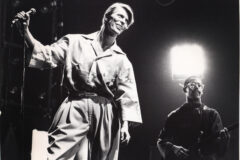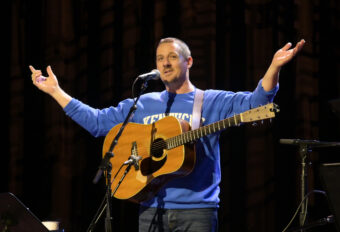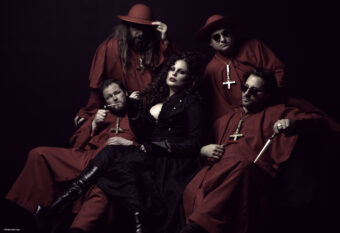Release Date: July 01, 2014
Label: Warp
When Brian Eno and Underworld frontman Karl Hyde got together to record Someday World, released in May, they intended to create in the experimental mode Eno had dubbed “Reickuti” — the minimalist drones of avant-garde classical composer Steve Reich combined with the maximalist funk of Afrobeat pioneer Fela Kuti. And although those elements occupy the background on that album, what ended up being showcased is playful European art-pop, the sort of stuff Eno released on his ‘70s milestones Another Green World and Before and After Science, understatedly vibrant records that Hyde drew from on his uncharacteristically subtle 2013 solo debut, Edgeland.
But when it came time to promote Someday World, Eno instead suggested that the press watch them make another record, one that forefronts techniques Someday World ultimately minimized or abandoned, and does so with a far smaller cast. Leaning heavier in Reichkuti, High Life delivers the bold strokes you’d expect from England’s most adventurous veteran studio alchemist and the improvisational singer from that country’s longest running techno-rock hybrid.
Eno may make his money working with behemoth bands like U2 and Coldplay, yet he keeps returning to kindred oddballs like David Byrne, John Cale, and David Bowie, artists who subvert semi-traditional songwriting with sonic exploration. Hyde is another, and he’s been that way for decades: “Doot Doot” – the 1983 debut single of Underworld’s first incarnation, psychedelic New Wave weirdoes Freur – remains such a canny homage to the producer’s ambient pop that even today it’s more Eno-y than MGMT’s “Brian Eno.”
Someday World also pays tribute to the super-producer’s past: “Witness” borrows the hook and wordless harmonies from Another Green World’s simultaneously jittery and placid “St. Elmo’s Fire.” Much of the rest is correspondingly dense with digressive intricacies, spiky percussion, and overlapping vocal identities: Eno and Hyde swap and combine their alike and quintessentially English croons to the point where their personalities virtually align. It’s as if the record were made by Eno and his aural twin.
Where Someday World is layered and considered, High Life gets far more immediate and impulsive. Eno and Hyde manipulate DJ CD players loaded with prepared discs of polyrhythms and musical fragments while Edgeland co-producer Leo Abrahams – an investigative guitarist akin to early Eno collaborator Robert Fripp – squawks, squeaks, and scratches. “DBF” and “Lilac” recall the feisty post-punk/Afrobeat fusion of Talking Heads’ Fear of Music and Remain in Light; “Time to Waste It” undulates like the supernatural dub of Eno and Byrne’s My Life in the Bush of Ghosts. “Moulded Life” twists the African rhythms into industrial shapes, and closing cut “Cells & Bells” ebbs away in ethereal glitches.
Unlike Someday World, the far thornier High Life doesn’t improve much with repeated plays: These are egghead jams whose esoteric textures bewitch more than their relatively static frameworks. But together these complimentary records present contrasting views – one refined, the other largely unrestrained – of matured renegades revisiting earlier oblique strategies with renewed vigor. Neither argues for retirement.





